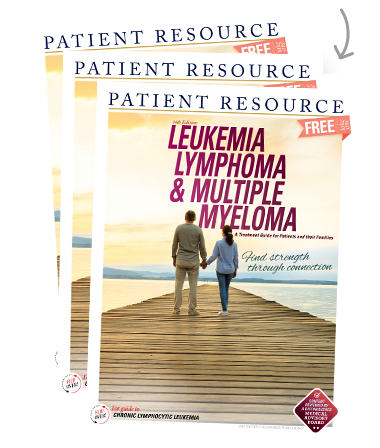Leukemias
Forms of Leukemia
The most commonly diagnosed types and subtypes of leukemia (as well as some rare forms) and many of the possible treatments are included in this table. Discuss your options with your health care team.
| Cancer type | Description |
| Acute lymphocytic (lymphoblastic) leukemia (ALL) | • Abnormal lymphoblasts develop quickly and block the production of normal bone marrow cells |
| Acute precursor B-cell (pre-B-cell) lymphoblastic leukemia |
• Fast-growing
• Excess of B-cell lymphoblasts
|
| Acute T-cell (lymphoblastic) leukemia (T-cell ALL) |
• Fast-growing
• Excess of T-cell lymphoblasts in bone marrow
|
| Burkitt acute lymphoblastic leukemia (B-ALL) |
• Rare
• Fast-growing
• Rapid increase of B-cell lymphocytes
|
| Ph-positive (Philadelphia-positive) ALL |
• Has the gene mutation
BCR-ABL
• Philadelphia chromosome present
• Fast-growing
• Abundance of B-cell lymphoblasts
|
| Acute myeloid leukemia (AML) | • Abnormal myeloblasts develop quickly and block the production of normal bone marrow cells |
| Acute promyelocytic leukemia (APL) |
• Abnormal promyelocytes accumulate in bone marrow
|
| Adult T-cell leukemia/lymphoma (ATLL) |
• 4 subtypes: smoldering, chronic, acute, lymphomatous
|
| Chronic lymphocytic leukemia (CLL) |
• Slow-growing
• Excess of abnormal B- or T-cell lymphocytes
|
| Chronic myeloid leukemia (CML) |
• Grows slowly at first
• Affects myeloid cells
• Philadelphia chromosome usually present
|
| Chronic myelomonocytic leukemia (CMML) |
• Elevated number of monocytes
• Affects primarily people ages 65-75
|
| Hairy cell leukemia (HCL) |
• Rare and slow-growing
• Cells appear hairy under microscope
• More common in men
• Average age at diagnosis, 50
|
| Large granular lymphocytic leukemia (LGLL) |
• Affects T-cells or NK-cells
• Larger lymphocytes with noticeable granules
|
| Natural killer cell leukemia (NK) |
• Rare
• Aggressive growth of NK- cells
|
| Prolymphocytic leukemia (PLL) |
• Rare
• Affects B- or T-cell lymphocytes
• Numerous immature lymphocytes
• Affects primarily people ages 65-70
|



